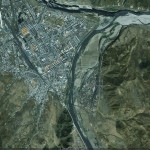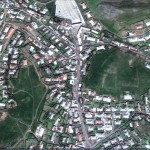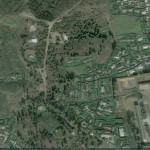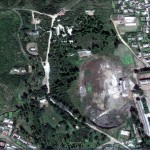According to the Mainichi Daily News:
A magazine composed almost entirely of materials smuggled out of North Korea by reporters living inside the country has just launched its first English edition in an effort to reach a wider audience.
The quarterly Rimjingang has been available in Korean and Japanese since 2008. The English edition will be published about twice a year from now on, chief editor Jiro Ishimaru said at a recent meeting in New York University, adding that digital editions in various formats will be available from 2011, including one from Apple Inc.’s iBook store.
Published by Asiapress International, a Japan-based journalists’ organization, the magazine is named after a river in the Korean Peninsula flowing north to south across the demilitarized zone. It operates with eight North Koreans who report clandestinely while living in such capacities as driver, factory worker and mother.
All of the reporters left North Korea because of economic hardships but returned to the country after being recruited to work for the magazine, which provides them with journalistic training and recording equipment.
In a country that tightly regulates information, taking images of street-level North Koreans for outside distribution would most likely be construed as treason. For safety, the identities of the North Korean reporters are completely shrouded in secrecy — they do not know each other or what their colleagues are doing, Ishimaru said.
The reporters periodically cross the China-North Korea border to deliver what they have recorded. The materials include digital images of people who foreigners would rarely have access to — a woman making merchandise at home to sell at a market, homeless children looking for food in a dump, clothing regulation enforcers on the lookout for youngsters wearing unacceptable fashions such as tight-fitting pants, and young soldiers scavenging for food from a farm.
“The reporters are taking risks because they have a strong will to let the outside world know the reality in North Korea and inspire a desire to improve the situation there,” Ishimaru said.
Some of the recent materials cover the paralyzing effect of the November 2009 currency redenomination in which North Korea slashed the value of the won, setting the exchange rate between the old and new bills at 100 to 1 and imposing restrictions on the quantity of old bills that could be swapped for new ones. The move was widely seen as the state’s attempt to reinforce control of the economy.
The magazine shows one of those affected, a woman identified as “Ms. Kang,” who is in her 50s and makes a living selling general goods such as plates and bowls procured in China.
Shortly before the devaluation, “Ms. Kang” reportedly took out a loan of 10 million won, worth about $3,000 at the time, from an acquaintance. Now she struggles with a huge debt as no currency trader will exchange her old won into Chinese yuan, leaving her unable to buy goods in China. She is also unable to convert them into the new won beyond the 100,000-won limit.
“Because the Americans don’t know very much about North Korea, we wanted to include some introductory pieces that explain people’s everyday lives there, including the impact the market is having,” said Bon Fleming, an American editor who translated the bulk of the material for the English edition.
Suzy Kim, assistant professor of Korean history at Rutgers University, said she was most impressed by the abundance of visual footage in the magazine. But she added, “Many of the stories in the magazine are anecdotal — there is as yet no way to collect enough information to present a statistical context for the stories.”
In order to make up for its heavy dependence on a handful of reporters, Kim suggested that the magazine can improve by incorporating a wider variety of views about North Korea from people with different backgrounds, experiences and opinions.
Ishimaru said North Korea is a nation changing fast and so are its people, contrary to the oft-reported images of brainwashed citizens. One of the forces behind the change is the increasing availability of digital media, a trend fueled by the influx of Chinese electronics, including VCD players, which are much more affordable than DVD players, he said.
Illegal copies of South Korean TV dramas crossed the border into North Korea en masse around 2003 via ethnic Korean communities in northeastern China, where watching South Korean satellite broadcasting programs became popular in the late 1990s, according to Ishimaru.
“What allowed the North Korean government to exert tight control over the daily lives of its people was the state’s food rationing system, which taught everyone to remain submissive as long as they were fed,” Ishimaru said.
Since the collapse of the public distribution system in the famine of the 1990s, however, people have been forced to fend for themselves and have become less afraid of the authorities, he said.
“You can no longer talk about North Korea without talking about the expansion of the market economy there,” Ishimaru said.
“The question is not about food — it’s whether North Korea will open up to the outside world or not.”
Previous posts about Rimjingang can be found here.
I have added Rimjingang to my list of North Korea media outlets all of which can be found here.
Read the full sotry here:
Undercover magazine on North Korea launches English edition
Mainichi Daily News
10/28/2010




